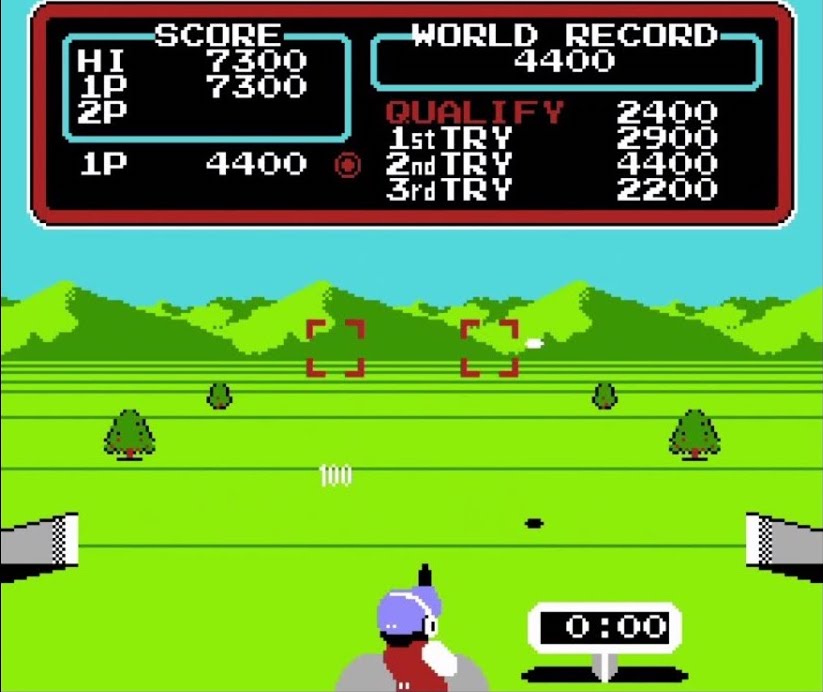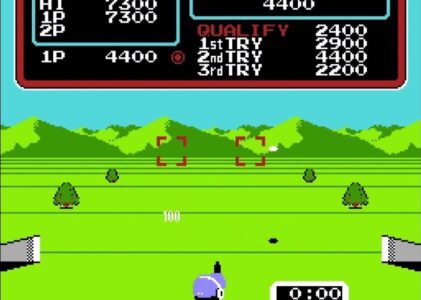In the golden age of arcade gaming, a sequel emerged that not only matched the fervor of its predecessor but arguably surpassed it in excitement and playability. Released in 1984 by Konami, “Hyper Sports” followed the success of “Track & Field” and offered gamers an enhanced experience with more diverse sporting events and improved graphics.
Genesis of “Hyper Sports”
“Hyper Sports” was developed as a direct sequel to “Track & Field,” a game that had already captivated a large audience with its competitive sports theme. The original game focused primarily on athletics like running and jumping. Konami, sensing the appetite for more, expanded the sporting repertoire in “Hyper Sports” to include seven new events: swimming, skeet shooting, long horse, archery, triple jump, weightlifting, and pole vault. This variety was designed to appeal to a broader audience and challenge the skill sets of players.

Gameplay and Mechanics
The gameplay of “Hyper Sports” retained the energetic, button-mashing spirit of “Track & Field” but introduced more complex mechanics and timing-based challenges. For instance, in the swimming event, players needed to time their strokes and breathing to optimize speed without exhausting their athlete. Similarly, skeet shooting required precise timing and quick reflexes, making it a test of both speed and accuracy.
The controls were straightforward, typically involving three buttons: one for running or speed and two for actions like jumping or shooting, depending on the event. This simplicity made the game accessible to newcomers yet challenging enough to retain the interest of seasoned gamers.
Exploring the Diverse Sports of “Hyper Sports”
“Hyper Sports” stood out in the arcade world for offering players a variety of sports to engage in, each with its unique gameplay mechanics and challenges. Here’s a closer look at each sport included in the game and how they were played:
1. Swimming
In the swimming event, players had to alternate pressing two buttons rapidly to simulate the athlete’s arms moving through the water. Timing was critical: a separate button needed to be hit at the right moment for the athlete to take a breath. If done correctly, this would maintain the swimmer’s speed without slowing down due to fatigue.
2. Skeet Shooting
Skeet shooting required players to hit two targets that appeared on the screen at random positions. This event used a trackball for aiming and a button for firing. Quick reflexes and sharp aiming were necessary to hit the targets as they flew across the screen at varying speeds and trajectories.
3. Long Horse (Vault)
The long horse, often referred to as the vault, involved a gymnastic display where players had to run up to the vault by rapidly pressing buttons to build speed. A timely press of another button would launch the athlete over the horse. The challenge was to execute this with precise timing to land perfectly on the other side.
4. Archery
Archery presented a test of accuracy and timing. Players controlled the angle and the timing of the shot to hit a target that could change in distance with each round. Wind direction and speed also affected the arrow’s flight path, adding a layer of strategy to each shot.

5. Triple Jump
This event was similar to the long jump in “Track & Field” but added complexity with three distinct phases: the hop, the step, and the jump. Players needed to time their button presses for each phase to optimize the length of each part of the jump, striving for the perfect combination to achieve maximum distance.
6. Weightlifting
Weightlifting was a test of power and timing. Players had to first build power by alternately pressing buttons and then time a final press to lift the weight successfully. The challenge was maintaining the lift long enough for it to be counted, requiring a delicate balance of speed and timing.
7. Pole Vault
The pole vault combined speed and precision. Like the long horse, players sprinted to build speed with rapid button presses, then had to choose the right moment to plant the pole and launch. The height of the vault could be influenced by the speed and timing of these actions, with successful vaults clearing the bar without knocking it down.
Each sport in “Hyper Sports” not only provided a unique challenge but also required players to adapt their skills and strategies. This variety kept the gameplay fresh and engaging, encouraging players to master multiple disciplines to achieve high scores. The mix of strategic depth and physical quickness made “Hyper Sports” a memorable and beloved classic in the arcade genre.
Technological Innovations
“Hyper Sports” showcased considerable advancements in arcade technology. The graphics were more detailed and vibrant than those of its predecessor, providing a more immersive experience. The use of richer color palettes and more fluid animations brought the various sporting events to life, enhancing the overall visual appeal.
The sound design also played a crucial role in the game’s atmosphere. Each event featured realistic sound effects that mirrored the intensity of real-life sports competitions, from the splash of the pool in swimming events to the resounding crack of gunfire in skeet shooting.

Cultural Impact and Legacy
“Hyper Sports” became a staple in arcades around the world, fostering competitive play among friends and strangers alike. Its inclusion of diverse sports broadened its appeal, allowing players from different backgrounds to find an event where they could excel.
The game also had a significant impact on future sports video games. It set a precedent for how sports could be represented in gaming, emphasizing not only the physical prowess required to excel in sports but also the strategic thinking needed to master them.
Similar and Inspired Games
“Hyper Sports” inspired a number of similar games and influenced the development of sports video games in general. Here are some notable titles that share similarities with “Hyper Sports” or were inspired by its gameplay and success:
1. Track & Field (1983)
“Track & Field” was the predecessor to “Hyper Sports” and set the stage for multi-event sports games with its Olympic-style competition. It featured events like sprinting, long jump, and javelin, and introduced the rapid button-pressing gameplay that became a staple in “Hyper Sports.”
2. Decathlon (1983)
Released by Activision, “Decathlon” brought the Olympic decathlon to home consoles, challenging players across ten track and field events. Like “Hyper Sports,” it demanded fast fingers and stamina, making it a direct competitor in terms of gameplay style.
3. California Games (1987)
Developed by Epyx, “California Games” offered a variety of outdoor sports such as surfing, skateboarding, and BMX biking. Though not directly inspired by “Hyper Sports,” it followed the same multi-sport anthology format, focusing on a more laid-back, Californian culture-themed set of activities.
4. Summer Games (1984)
Also by Epyx, “Summer Games” provided an Olympics-like competition with events like diving, pole vaulting, and gymnastics. Its success led to several sequels and expanded the concept of international sports competition games.
5. Daley Thompson’s Decathlon (1984)
This game was based on the famous decathlete Daley Thompson and featured a series of Olympic events similar to those in “Track & Field” and “Hyper Sports.” It was particularly popular on home computers and is remembered for its rigorous button-smashing gameplay.
6. International Track & Field (1996)
Developed by Konami for the PlayStation and other platforms, this game was a modern revival of the original “Track & Field,” expanding on the concept with new technologies and updated graphics. It retained the classic gameplay while offering new events and more sophisticated control schemes.
7. Mario & Sonic at the Olympic Games (2007)
This popular series features characters from the Nintendo and SEGA franchises competing in Olympic-style events. While more recent and technologically advanced, its core gameplay of diverse sporting challenges echoes the spirit of “Hyper Sports.”
These games and series highlight the enduring appeal of multi-sport arcade games and demonstrate how “Hyper Sports” helped define a genre that combines physical skill with strategic gameplay. Whether through direct inspiration or simply by cultivating a genre, “Hyper Sports” left a lasting legacy that continues to influence sports video games today.
Hyper Sports
Today, “Hyper Sports” is remembered fondly by enthusiasts of retro gaming. It is often cited as a pioneering example of how video games could capture the thrill of sports. Its legacy continues in various compilations and re-releases, allowing new generations to experience its competitive spirit and dynamic gameplay.
As we look back at “Hyper Sports,” it’s clear that its success wasn’t just a product of its time but a testament to the enduring appeal of well-crafted sports games. Its blend of simplicity, challenge, and diversity remains a winning formula in the gaming world.

